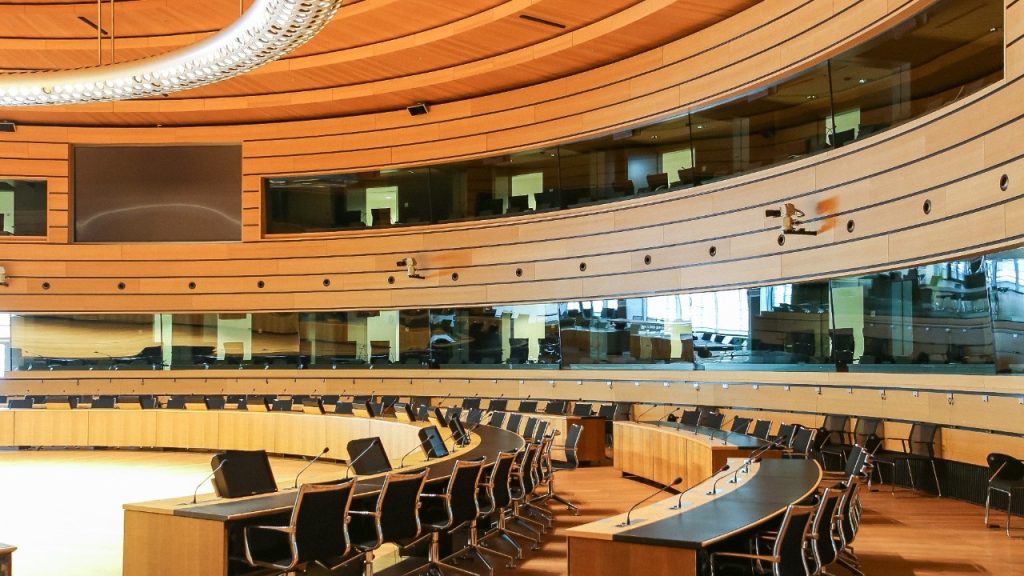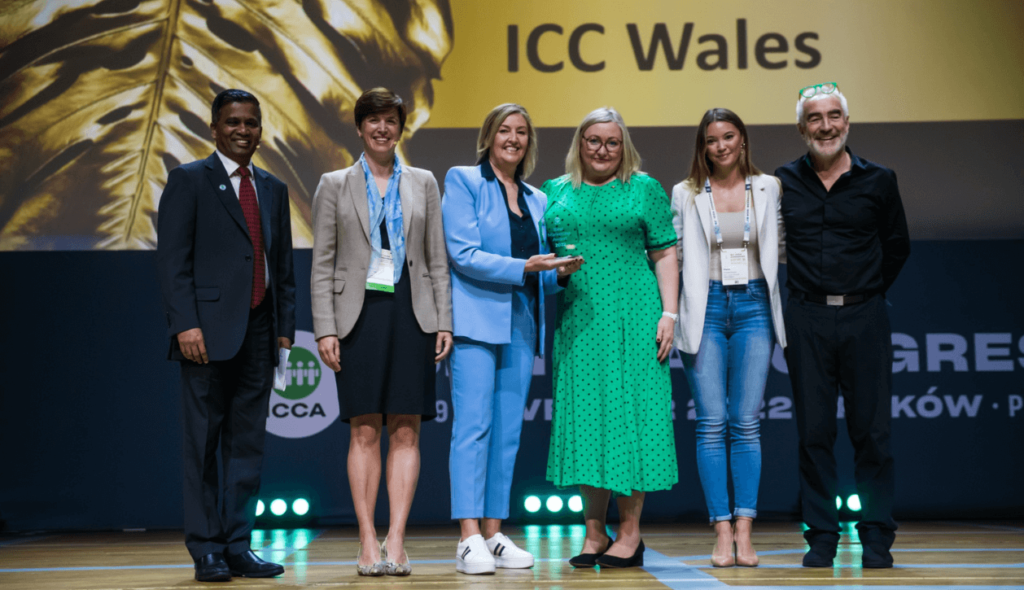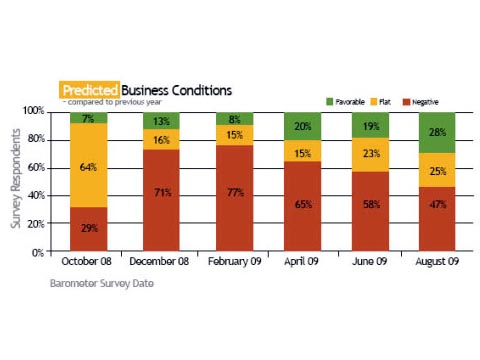How the UK event industry works

Share news
Listen
Are bids usually properly organized?
AR: It varies a lot. We still see some ridiculous cases with more than 20 agencies, especially for government bids where everyone is invited to participate. But I would say the majority are quite fair, involving up to four or five agencies. As an agency, we generally only pitch if the number of participants is capped – typically four agencies, including ourselves. Exception to that rule would be if we are the incumbent.
AW: In a recent industry-wide campfire session, we saw agencies have different approaches: some don’t participate in bids with many players, others are more eager to get to the client and will try their luck.
Often, processes by large global companies will include an RFI with 15-20 agencies, before narrowing down to an RFP stage with 5-6, as these companies have a lot of due diligence in their procurement process. This is especially true in financial and pharmaceutical sectors, but in the tech industry, companies want to be more agile and go quickly to RFP without an RFI stage.
If it is a local client, it will often be 3-4 agencies in a direct RFP, without a previous RFI.
AR: We still see some poor practice, even amongst big global brands, but overall the situation is improving.
RFI/RFP looks like a good way to work, limiting the work of the agencies in the pre-selection phase?
AR: The RFI stage can be a significant amount of work. Recently we spent 10 days (two people, full time) working on an RFI stage. So, even with an RFI, you have to assess if it makes sense to participate. At Shelton Fleming, for example, were now rigorously evaluate an RFI and RFP before we agree to go forward. We’ll look at number of agencies pitching, strength of the incumbent, service and geographic fit, cultural fit, potential for on work, realistic budget and time frame, quality of brief, right down to, is it work we’ll feel proud of. Bottom line, there is a large financial cost and, very often more important that the cost, is the impact on staff morale, if we pitch for work that has a low probability of success. The team throws heart and soul into pitches which if we lose because, for example, the incumbent was entrenched, this can have a corrosive effect on morale.
One of the big challenges with incumbents (and of course this swings both ways, if we are the incumbent) is the assets the agency sits on. Often there’s physical assets or software-based platforms or even knowledge of processes, that gives the incumbent a significant advantage. You really have to ask yourself, if you were the client, why would you move from an agency that may be doing perfectly good work… bar the fact the procurement cycle mandates a review.
AW: Yes, we would sometimes decline the opportunity.
Are pitches sometimes paid?
AR: Occasionally, there’s a pitch fee or consolation fee, if you are not awarded. It’s rare. And there’s often a down side. In many cases, if there’s a pitch fee, the contract stipulates the client owns the ideas or can stop the agency from developing the idea, even if the agency isn’t awarded the contract.
Is there a continuous relationship between agencies and clients?
AW: the UK market is very international, and works a lot at European level. In many cases the relationship is within a preferred partner agreement, in which the company has multiple agencies rostered (eg one for their incentives, one for their management meetings, etc) and depending on the project, they would do a bid or split the project to several agencies. What we don’t see so much is pitching for every single event with new agencies; the notion of partnership is now more established.
We see more relationships with 3-year contracts, where the terms of the relationships and the costs of the agency are clearly established.
AR: I would corroborate what AW’s says above. All our clients are regular, continuous relationships, some going back 10 or 20 years, and certainly 3 plus years. However, what I would say is, even when a client is in a long term, contractual relationship, most have get-out clauses. If they decide to pull out of an event, there’s not much stopping them.
AW: Bids are a real cost and we aim to make the client is aware of that, informing them that if they pitch for each event, we will need to bill them more to cover this cost.
AR: One factor strengthening loyalty is situations where the agency builds a software-based platform or physical event assets that apply to their events; for example: managing a large event registration data-base. The cost of switching vendor or partner increases. This is especially true for agencies in the incentives space, where there’s a mountain of longitudinal data on sales performance, retailers, etc.
Education and professional profiles: are they clear at industry level?
AW: Most agencies in the upper and mid-tiers have job descriptions, competency / skills requirements and internal training and leadership development programmes. These usually fall under HRS remit. Where EVCOM can support, is in providing this HR related advice and educational modules in a format and cost that’s suitable for smaller agencies.
However, in general HR is taken seriously across the industry. This starts with education: there are different education centers: university degrees, apprenticeships (which combine formal education and with practical, on-the-job training). As an association, we help formalize types of jobs and training schemes the industry will require.
AR: Unlike other professions and, even vocations, it’s still a fairly mixed-bag when it comes to formal training and what the university curriculums cover. If you reflect on the industry’s roots, it used to be event management courses focused a lot on theatrical production. Indeed, events fell into the realm of what people called, Industrial Theatre. And there’s still a lot of courses with that theatrical production orientation.
However, today the industry has swung towards brand development, and now digital, social media and behavioural psychology are infiltrating. Some courses spin towards brand and marketing, some theatrical production, others are more content orientated with a film and digital media bias. Going forward I can see strategic coms planning as well as behavioral psychology and economics being worked into some degrees.
AR: We see new roles emerging, for instance creative technologists. We also new players are coming in from social media as well as the leadership development and business transformation sphere from a corporate culture and training perspective. And this isn’t a surprise, if you consider live events are increasingly geared to hack strategy in real time, be more participative and generally impart new skills to cope with business transformation. The social and people development disciplines are integral to this new world.
Events are evolving…
AR: Live events used to be about broadcasting and cascading strategy. Some events may still have a plenary session we increasingly find events are becoming “festivalised” where the attendees choose what they want to do. These events are now much more participative with digital interactive dimension.
So, a key challenge is to onboard digital capabilities, across app development, smart Wi-Fi and digital content development and management. We have an editing studio because our events need a lot of audiovisual material. But it used to be for high-end film production. Now it’s about short burst filmic content to feed social channels… often generated in near real-time.
Also it is getting important to be familiar with data analytics and ROI measurement. You now have measurement solutions that will evaluate in real time how an audience is responding to experiences and content. And this measurement can enable content and audience engagement to be customized and adapted in real time. This includes things like, using sensors and cameras to track audience circulation, exposure to messages, dwell time, and emotional engagement. Cameras can passively track facial expressions to monitor emotional engagement with messages and experiences.
And those are non-intrusive biometrics. You don’t keep the personal data on the attendees.
‘Festivalisation’ is also coming about because most companies find their business is evolving around eco-systems. So, you have companies involving their supply chain in the event, and each of their partners will have their role within the event.
AW: There’s a lot of digital technology being woven into events. Most of it is complementary. It doesn’t take away the need for face to face, it mostly augments and enhances the experience. So, we find Augmented Reality, Virtual Reality, online combined with F2F creates a more personalized journey. There is a true blending of technologies, which enables a better experience and extends audience reach. Many agencies now think of the complete journey; you can’t look at F2F in isolation anymore.
Are agency types clearly defined?
AW: There is a clear divide between more logistical agencies (eg travel, hotel and delegate management), and agencies more involved in creative and content strategy. Logistics are a very important part of the equation but the agencies successful in this arena are the ones establishing strategic relationships with their clients. Also, for specific know-how like digital, agencies are partnering more frequently. This is becoming a transparent process with agencies stating clearly who does what. This transparency is something Spain has always struggled with. It should be OK to say “we understand your needs and will setup the perfect team”.
Commission, markup, fees… How are agency services paid?
AR: we charge out primarily on fees and have an agreement with our clients to not mark up some elements, but not all agencies have this policy. We are set up as a creative agency with digital and brand credentials, whereas some agencies are geared around production and tech hire. Those agencies will tend to mark up. Transparency is not the norm.
AW: it depends on the services procured. In the more transactional part of the industry, it is fairly easy to see where the money is, and commissions are declared. When you look at more complex production, it is harder to de-construct pricing. To clarify this situation, EVCOM advocates complete transparency.
Are events becoming a more strategic marketing tool?
AR:Yes. Events do have a more strategic seat at the top table, and recognised place in the communications and marketing plan. We now often sit down with the brand teams and senior marketing people to define the brand positioning and engagement strategy. However, the` paradox here is, it’s fine when the marketing people are in the frame but if it’s just the events team, too often they are just focused in the logistics and functional requirements, and the strategy is not articulated. Some event managers are still removed from the commercial objectives and brand needs.
You were talking about Strategic Meeting Management Programmes; are they common?
AW: It depends on industries: you see it a lot in SME companies implementing SMMP soft programmes which is specifically tailored to their business needs. Big pharma and financials have gone through that in various degrees but it depends a lot on the company. Some have a global view, some regional & some local… If you apply it rightly, SMMP brings a lot of value. The error is many companies focus on the price, when the benefits of SMMP go well beyond, to coherence, ROI and a more efficient organization.










